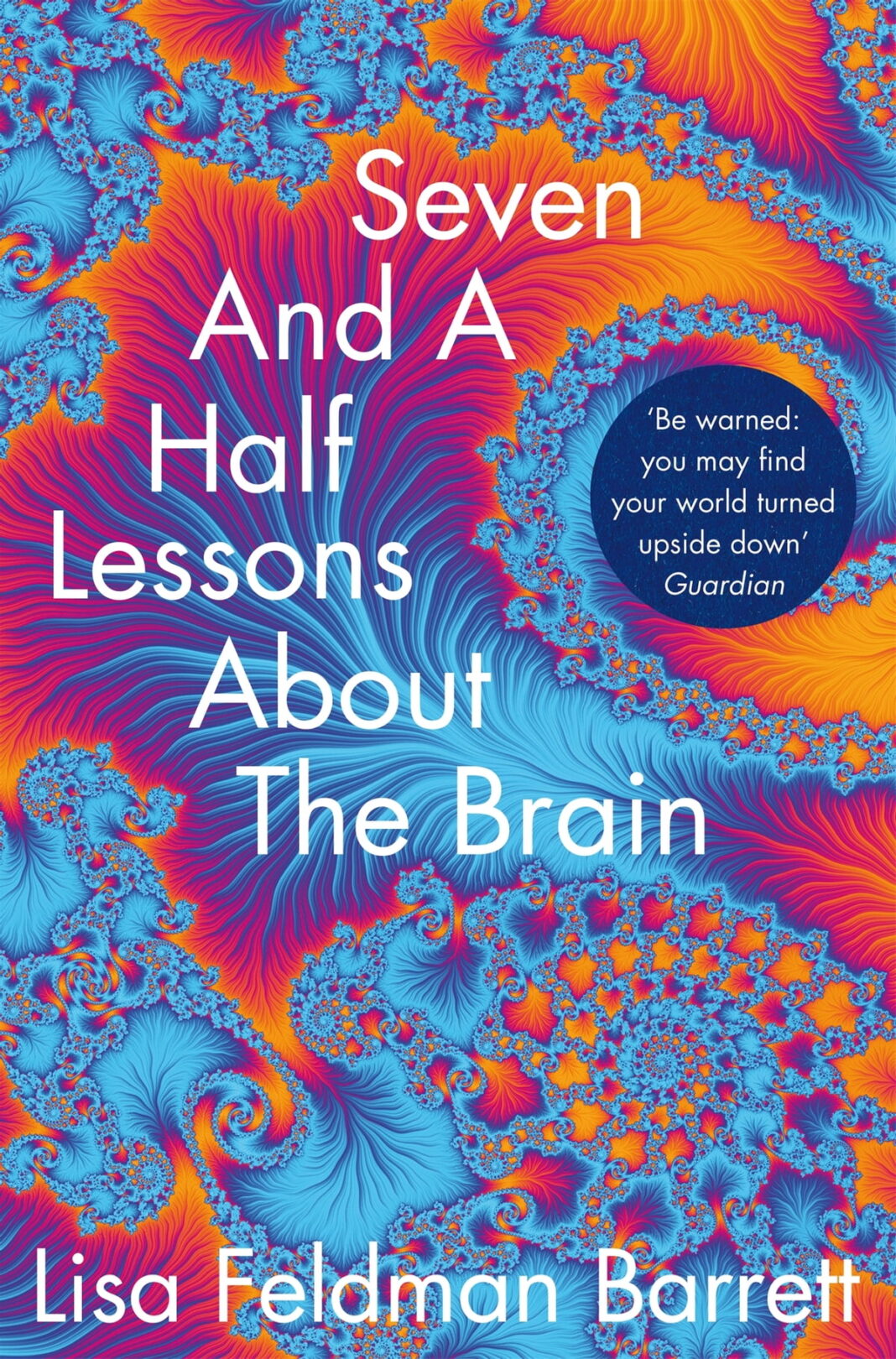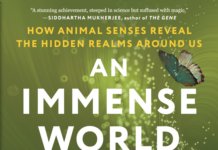Why did a brain like yours evolve? That question is not answerable because evolution does not act with purpose—there is no “why.” But we can say what is your brain’s most important job. It’s not rationality. Not emotion. Not imagination, or creativity, or empathy. Your brain’s most important job is to control your body—to manage allostasis—by predicting energy needs before they arise so you can efficiently make worthwhile movements and survive. Your brain continually invests your energy in the hopes of earning a good return, such as food, shelter, affection, or physical protection, so you can perform nature’s most vital task: passing your genes to the next generation.
==========
According to this evolutionary story, the human brain ended up with three layers—one for surviving, one for feeling, and one for thinking—an arrangement known as the triune brain. The deepest layer, or lizard brain, which we allegedly inherited from ancient reptiles, is said to house our survival instincts. The middle layer, dubbed the limbic system, supposedly contains ancient parts for emotion that we inherited from prehistoric mammals. The outermost layer, part of the cerebral cortex, is said to be uniquely human and the source of rational thought; it’s known as the neocortex (“new cortex”). One part of your neocortex, called the prefrontal cortex, supposedly regulates your emotional brain and your lizard brain to keep your irrational, animalistic self in check. Advocates of the triune brain note that humans have a very large cerebral cortex, which they see as evidence of our distinctly rational nature.
==========
The triune brain idea is one of the most successful and widespread errors in all of science
==========
Natural selection did not aim itself toward us—we’re just an interesting sort of animal with particular adaptations that helped us survive and reproduce in particular environments. Other animals are not inferior to humans. They are uniquely and effectively adapted to their environments. Your brain is not more evolved than a rat or lizard brain, just differently evolved.
==========
If that’s the case, why is the myth of the triune brain still popular?
==========
But mostly it’s because the triune brain is a story that comes with its own cheering section. With our unique capacity for rational thought, the story goes, we triumphed over our animal nature and now rule the planet. To believe in the triune brain is to award ourselves a first prize trophy for Best Species.
==========
But what is rational behavior, anyway? Traditionally, it’s the absence of emotion. Thinking is viewed as rational, whereas emotion is supposedly irrational. But that isn’t necessarily so. Sometimes emotion is rational, like when you feel afraid because you’re in imminent danger. And sometimes thinking isn’t rational, like when you scroll through social media for hours, telling yourself you’re bound to come across something important.
==========
Today, we remain surrounded by so-called facts about the brain that are also just metaphors. If you’ve heard that the left side of your brain is logical and the right side is creative, that’s just a metaphor. So is the idea that your brain has a “System 1” for quick, instinctive responses and a “System 2” for slower, more thoughtful processing, concepts discussed in the book Thinking, Fast and Slow by psychologist Daniel Kahneman. (Kahneman is very clear that Systems 1 and 2 are metaphors about the mind; but they are often mistaken for brain structures.)
==========
Your brain network is organized in much the same way. Its neurons are grouped into clusters that are like airports. Most of the connections in and out of a cluster are local, so, like an airport, the cluster serves mostly local traffic. In addition, some clusters serve as hubs for communication. They are densely connected to many other clusters, and some of their axons reach far across the brain and act as long-distance connections.
==========
Your brain wiring is bathed in chemicals that complete the local connections between neurons. These chemicals, such as glutamate, serotonin, and dopamine, are called neurotransmitters, and they make it easier or harder for signals to pass across synapses. They’re like the airport staff—ticket agents, security screeners, ground crew—who can speed up or slow down the flow of passengers within an airport and without whom we can’t travel at all.
==========
physical brain structure seems unchanged. In addition, some of these chemicals, such as serotonin
==========
In addition, some of these chemicals, such as serotonin and dopamine, can also act on other neurotransmitters to dial up or dial down their effects. When brain chemicals act in this way, we call them neuromodulators. They are like the weather between airports. When it’s clear, planes fly quickly. When it’s stormy, flights are grounded or rerouted. Neuromodulators and neurotransmitters together allow your brain’s single structure to take on trillions of different patterns of activity.
==========
Just as airports build or renovate their terminals, your brain is constantly under construction. Neurons die, and in some parts of the human brain, neurons are born. Connections become more or less numerous, and they become stronger when neurons fire together and weaker when they don’t. These changes are examples of what scientists call plasticity, and they occur throughout your life. Anytime you learn something—a new friend’s name or an interesting fact from the news—the experience becomes encoded in your wiring so you can remember it, and over time, these encodings can change that wiring.
==========
Overall, no neuron has a single psychological function, though a neuron may be more likely to contribute to some functions than others. Even when scientists name a brain area after a function, like “visual cortex” or the “language network,” the name tends to reflect the scientist’s focus at the time rather than any exclusive job performed by that part of the brain. I’m not saying that every neuron can do everything, but any neuron can do more than one thing, just like a single airport can launch planes, sell tickets, and serve crappy food.
==========
Meanwhile, less-used connections weaken and die off. This is the process of pruning, the neural equivalent of “If you don’t use it, you lose it.” Pruning is critical in a developing brain, because little humans are born with many more connections than they will ultimately use. A human embryo creates twice as many neurons as an adult brain needs, and infant neurons are quite a bit bushier than neurons in an adult brain. Unused connections are helpful at the outset. They enable a brain to tailor itself to diverse environments. But over the longer term, unused connections are a burden, metabolically speaking—they don’t contribute anything worthwhile, so it’s a waste of energy for the brain to maintain them. The good news is that pruning these extra connections makes room for more learning—that is, for more useful connections to be tuned.
==========
For example, a neglected little brain in a socially impoverished environment may wire itself to manage its own body budget alone, without the social support from caregivers and the wiring instructions they provide through their actions. This nontypical wiring imposes a pernicious burden on the body budget that accumulates over years, raising the odds of serious health problems later, such as heart disease, diabetes, and mood disorders like depression, all of which have metabolic underpinnings.
==========
We see similar consequences when little brains develop in poverty. Research shows that early and long exposure to poverty is bad for the developing brain. Inadequate nutrition, interrupted sleep due to street noise, poor temperature regulation due to lack of heat or ventilation, and other circumstances of poverty may alter the development of the front of the cerebral cortex, namely the prefrontal cortex. This brain area is involved in a range of critical functions, including attention, language, and body budgeting.
==========
These burdens ultimately increase a child’s risk of living in poverty when he grows up and has children of his own.
==========
Scientists are still studying the ways that poverty affects brain development, but we do know that it’s linked to poorer performance in school and fewer years of education. These burdens ultimately increase a child’s risk of living in poverty when he grows up and has children of his own. It wouldn’t surprise me if this vicious cycle reinforces negative stereotypes about people who live in poverty. Society is quick to blame genes when poverty endures across generations for a group of people. But it’s plausible that those little brains are being molded by poverty.
==========
Given the powerful impact of neglect and poverty on a little brain, it’s tempting to ask how evolution got our species into this precarious situation in the first place. It’s risky for a baby’s brain wiring to depend so critically on social and physical input in order to develop typically. We humans must gain some advantage to offset the risks of developing this way. So what is it? We can’t know for sure, but here is my guess based on evidence from evolutionary biology and anthropology: This arrangement helps our cultural and social knowledge flow efficiently from generation to generation.
==========
When the baby grows up, he perpetuates that niche by passing his culture to the next generation through his words and actions, wiring their brains in turn. This process, called cultural inheritance, is efficient and frugal because evolution doesn’t have to encode all our wiring instructions in genes. It off-loads much of the job to the world around us, including the other humans in that world. We unknowingly wire the knowledge of our culture into our
==========
When the baby grows up, he perpetuates that niche by passing his culture to the next generation through his words and actions, wiring their brains in turn. This process, called cultural inheritance, is efficient and frugal because evolution doesn’t have to encode all our wiring instructions in genes. It off-loads much of the job to the world around us, including the other humans in that world. We unknowingly wire the knowledge of our culture into our offspring after birth, for better or worse.
==========
When it comes to the brain, simple distinctions like nature versus nurture are alluring but not realistic. We have the kind of nature that requires nurture.
==========
When it comes to the brain, simple distinctions like nature versus nurture are alluring but not realistic. We have the kind of nature that requires nurture. Your genes require a physical and social environment—a niche filled with other humans who shared your infant gaze, spoke to you with intent, set your sleep schedule, and controlled your body temperature—in order to produce a finished brain.
==========
Scientists are now fairly certain that your brain actually begins to sense the moment-to-moment changes in the world around you before those light waves, chemicals, and other sense data hit your brain. The same is true for moment-to-moment changes in your body—your brain begins to sense them before the relevant data arrives from your organs, hormones, and various bodily systems. You don’t experience your senses this way, but it’s how your brain navigates the world and controls your body. But don’t take my word for it. Instead, think of the last time you were thirsty and drank a glass of water. Within seconds after draining the last drops, you probably felt less thirsty. This event might seem ordinary, but water actually takes about twenty minutes to reach your bloodstream. Water can’t possibly quench your thirst in a few seconds. So what relieved your thirst? Prediction.
==========
So, your brain issues predictions and checks them against the sense data coming from the world and your body. What happens next still astounds me, even as a neuroscientist. If your brain has predicted well, then your neurons are already firing in a pattern that matches the incoming sense data. That means this sense data itself has no further use beyond confirming your brain’s predictions. What you see, hear, smell, and taste in the world and feel in your body in that moment are completely constructed in your head. By prediction, your brain has efficiently prepared you to act.
==========
Brains aren’t wired for accuracy. They’re wired to keep us alive.
==========
When your predicting brain is right, it creates your reality. When it’s wrong, it still creates your reality, and hopefully it learns from its mistakes.
==========
Now here’s the final nail in the coffin of common sense: All this predicting happens backward from the way we experience it. You and I seem to sense first and act second. You see an enemy and then raise your rifle. But in your brain, sensing actually comes second. Your brain is wired to prepare for action first, like moving your index finger onto a trigger and making body-budgeting changes to support that movement. It’s also wired to route these predictions to your sensory systems, which predict the feeling of cold steel on your fingertip and your racing heartbeat. In the case of our soldier friend, his brain heard rustling leaves, moved his hands on the gun, and guided itself to see enemies that weren’t present. Yes, your brain is wired to initiate your actions before you’re aware of them. That is kind of a big deal. After all, in everyday life, you do many things by choice, right? At least it seems that way. For example, you chose to open this book and read these words. But the brain is a predicting organ. It launches your next set of actions based on your past experience and current situation, and it does so outside of your awareness.
==========
Ultimately, your family, friends, neighbors, and even strangers contribute to your brain’s structure and function and help your brain keep your body humming along. This co-regulation has measurable effects. Changes in one person’s body often prompt changes in another person’s body, whether the two are romantically involved, just friends, or strangers meeting for the first time.
==========
When you’re with someone you care about, your breathing can synchronize, as can the beating of your hearts, whether you’re in casual conversation or a heated argument. This sort of physical connection happens between infants and their caregivers, between therapists and their clients, and among people taking a yoga class or singing in a choir together.
==========
To the best of our knowledge, no other animal brain can do that—social reality is a uniquely human ability. Scientists don’t know for sure how our brains developed this capacity, but we suspect it has something to do with a suite of abilities that I’ll call the Five Cs: creativity, communication, copying, cooperation, and compression.




